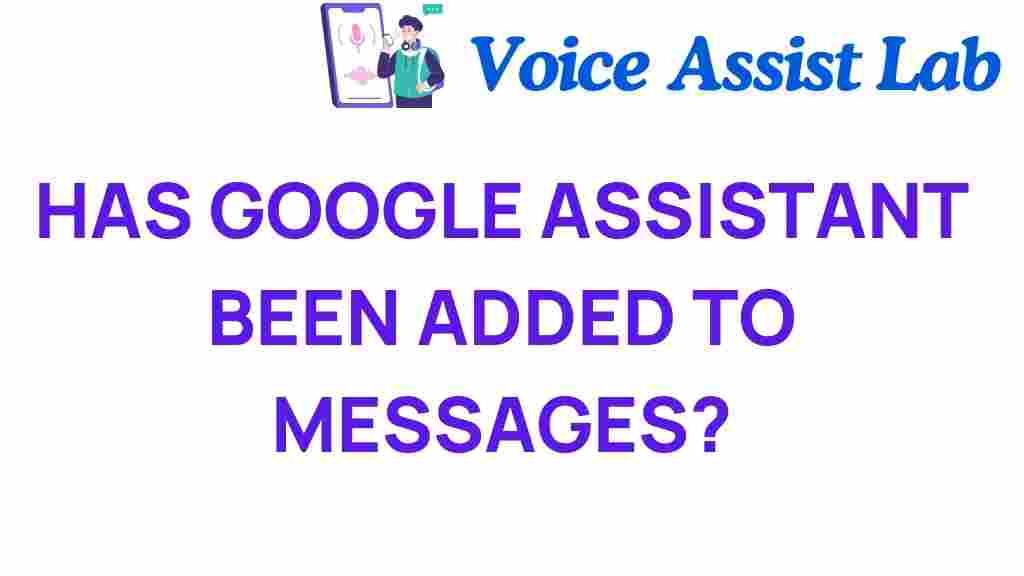Has Google Assistant Transformed Messaging Forever?
The rise of technology has significantly altered how we communicate, and one standout innovation in this realm is Google Assistant. Since its launch, Google Assistant has increasingly influenced messaging, offering a seamless user experience across various smart devices. As artificial intelligence (AI) continues to evolve, the integration of Google Assistant into messaging applications is transforming digital interaction, making communication more efficient and intuitive than ever before.
The Evolution of Messaging with AI
Messaging has come a long way from traditional text messages to the current array of instant messaging platforms. With the advent of AI, particularly through tools like Google Assistant, users can now experience a new dimension of messaging. Here’s how Google Assistant is reshaping the landscape:
- Voice Commands: Users can send messages through voice commands, making communication hands-free and accessible.
- Smart Replies: Google Assistant suggests quick responses based on the context of the conversation, saving time and enhancing the user experience.
- Integration with Other Apps: Google Assistant seamlessly works with various messaging apps, allowing users to manage conversations from one interface.
How Google Assistant Enhances User Experience
The user experience is paramount in any communication tool, and Google Assistant excels in this area. Here’s a breakdown of the key features that enhance messaging:
- Contextual Understanding: Google Assistant uses AI to understand the context of messages, which helps it generate appropriate responses.
- Personalization: Over time, Google Assistant learns from user interactions, offering more personalized suggestions and responses.
- Multi-Device Synchronization: Users can switch between devices, and Google Assistant retains the context of conversations, ensuring continuity.
Step-by-Step Guide to Using Google Assistant for Messaging
Getting started with Google Assistant for messaging is straightforward. Follow this step-by-step guide:
- Activate Google Assistant: On your smart device, activate Google Assistant by saying “Hey Google” or pressing the designated button.
- Choose Your Messaging App: Specify the messaging app you want to use (e.g., WhatsApp, Messenger).
- Send a Message: Say “Send a message to [contact name]” followed by your message. For example, “Send a message to John: I’ll be late.”
- Use Smart Replies: When you receive a message, you can respond using voice commands or select from the smart reply options.
Common Issues and Troubleshooting Tips
While Google Assistant is designed to enhance communication, users may encounter some challenges. Here are a few common issues and troubleshooting tips:
- Issue: Google Assistant Doesn’t Recognize Commands
- Ensure that your device’s microphone is enabled and functioning properly.
- Check if Google Assistant is set up correctly in the app settings.
- Issue: Messages Not Sending
- Verify that your internet connection is stable.
- Ensure that the messaging app is updated to the latest version.
- Issue: Smart Replies Not Appearing
- Check if smart replies are enabled in the Google Assistant settings.
- Try restarting the device to refresh the app functionalities.
The Impact of Google Assistant on Communication
The integration of Google Assistant into messaging is not just about convenience; it also marks a significant shift in how we communicate. Here are some notable impacts:
- Increased Speed: With voice commands and smart replies, users can communicate faster, which is vital in today’s fast-paced environment.
- Accessibility: Google Assistant makes messaging more accessible for individuals with disabilities, allowing them to communicate effectively.
- Enhanced Engagement: Businesses can leverage Google Assistant for customer interactions, improving engagement through personalized communication.
The Future of Messaging with AI
As AI technology continues to advance, the future of messaging looks promising. Here are some trends we can expect:
- More Natural Interactions: Future iterations of Google Assistant may enable even more natural conversations, with advanced understanding of context and emotion.
- Integration with Augmented Reality (AR): Messaging may evolve to include AR features, allowing users to communicate in immersive environments.
- Greater Security: As communication becomes more digital, enhanced security features will be crucial to protect user data.
For more insights into the latest technology trends, check out this informative article on emerging AI technologies.
Conclusion
In conclusion, Google Assistant has indeed transformed messaging forever. By leveraging the power of AI, it has improved user experience, streamlined communication, and introduced innovative features that cater to modern needs. As we move forward, the continuous evolution of Google Assistant and similar technologies promises to further enhance digital interaction, making communication more efficient and enjoyable. Embracing these advancements is not just about keeping up with technology; it’s about enhancing our everyday lives through better communication.
For more information on improving your digital interactions, feel free to explore our resources on effective communication strategies.
This article is in the category Innovations and created by VoiceAssistLab Team
